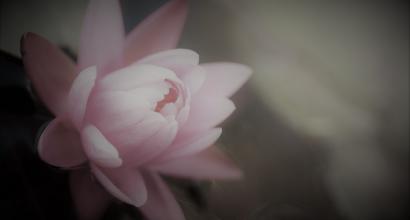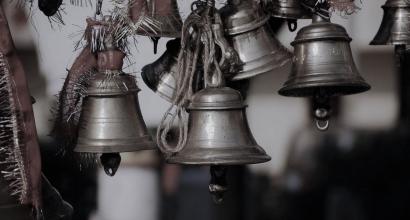Literary Feats
At the behest of H. H. Krishnaraja Wodeyar IV, there was an āśu-kavitā competition held in 1925 at Mysore in which the participating poets had to compose poetry instantaneously on the topic of the overall development of the modern Mysore State. Sarma stood first in the competition in which over forty scholars participated. His creation—a campū-kāvya—known as ‘Śrī Mahiśūra-rājyābhyudayādarśaḥ,’ became famous in due course.
It is not difficult to write a poem on traditional subjects. Several precedents and models are available for those. Sarma’s poem had thrown light on several developmental aspects of modern Mysore, viz. electricity generation, the fierce waterfalls, the pleasant experience of electricity, mining, construction of bridges and dams, education, and so forth. Sarma also highlighted the multifaceted achievements of Chamarajendra Wodeyar X and Krishnaraja Wodeyar IV such as educational reforms, improvement of railways, and the upliftment of the down-trodden. We should indeed accept that it was astounding on the part of Sarma to write wonderful poetry on these mundane subjects. One such verse was the following –
iha sarabhasa prodyaddhārāprapāta-dṛḍhāhata-
pracalita-mahā-cakrair-yantrair-iyaṃ pratipāditā।
stanita-kaṭhinair-megha-dhvāntair-adūṣita-nistula-
dyutir-acapalā vidyud-dhātrīṃ tanoti divo’dhikām॥Big sized wheels of a machine that are set to motion by the fiery waterfalls generate electricity.
Being devoid of the harshness of thunder,
the darkness of a cloud and the fluctuating nature of lightning;
a permanent, pure, and silent electricity takes birth. This is indeed special!
During one of the aṣṭāvadhānas of Pisupati Chidambara Shastry in Mysore, the connoisseurs appeared unsatisfied with the composition of the avadhāni for the samasyā-pūraṇa. Sarma, who had just then entered that place, immediately composed the following poem and completed the samasyā –
nirjanāṭavī-madhya-duḥsthite
bhinna-bhittike kaṇṭakāñcite।
śūnya-devatā-mandire’bhavac-
candraśekharo’py-arkaśekharaḥ॥In a ruined and dilapidated temple in a desolate forest, in which thorny
pappus plants abound, the lord Candraśekhara has become an Arkaśekhara.[1]
The forewords written by Sarma to several books were as important as his lectures. It was rare to find him write a formal foreword restricted to a page or two. Most of his forewords were detailed and provided an insight into the respective subjects, powered by a great deal of research. Sarma’s attitude of ‘perennial self-satisfaction’ had made him lose count of the number of such forewords written by him. When we tried unearthing such writings in the 1970s across Karnataka and Andhra Pradesh, we were able to procure about fifty of them. We are unaware of the writings that passed into obscurity over the passage of time.
Life Experience
Sarma’s life experiences were vast and varied. He once travelled to the Dharmavaram region to conduct research on old palm-leaf manuscripts. There were no hotels during that period. He had to stay in a certain house. The lady of that house was a pūrva-suvāsini[2] (this was Sarma’s coinage). Sarma never worried too much about his meals and managed it somehow. The lady must have thought that Sarma, being a traditionalist, would not eat anything which she would cook, as was the custom of that era. In reality, Sarma never had such inhibitions. He only thought, “Why should I bother others?”
The next morning, when Sarma had gone to take a bath, the lady of the house with a benevolent intent of ensuring Sarma didn’t leave the house on an empty stomach, placed some soaked avalakki in his room. She had stepped out for a few minutes to fetch some ingredients to mix with the rice and make it a passable meal. Sarma returned from his bath while she was out of the house; he ate the soaked avalakki as it was and left the house for his work as he was in a hurry. One can only imagine what the lady went through upon her return!
When Sarma returned in the evening, the lady was filled with tears in her eyes and asked him, “Could I not even give you some curds and jaggery to mix?”
“Please do not feel bad, madam. I was getting late for my work and hence I left,” explained Sarma.
The next day, the lady told him in an assertive tone, “Look, I cannot see you go out on an empty stomach. Even at the cost of being cursed that I broke your ritual, I want you to eat the anna–rasam–palya (rice–curry–vegetable side-dish) that I have cooked. Please eat that and go!”
Without the slightest hesitation Sarma agreed and said, “The pleasure is mine; I will surely do so!” From that day onwards, Sarma enjoyed eating the food prepared by her, casting away her fear of having broken his vow.
* * *
About a hundred years ago, a distant relative of Sarma had once gone on a pilgrimage to Kāśī and other places. When he was in Mathura or in some other place, he had completely spent all his money. It was not easy in those times to procure money by writing a letter back home.
With no other option, he went to one of the pawn-broker shops and requested the lender, “I need some money now. I will be able to repay your money once I return home. I don’t have any item to pledge in your favour. However, I have visited Kāśī, Prayāga, and other holy places. You may accept the puṇya [loosely, ‘merit gathered by good deeds’] that I have gained by visiting those holy places as the pledge and loan me some money.”
This was acceptable to the merchant. At once, he gave him the money he needed.
Upon returning to his hometown, he immediately repaid the money along with some interest by sending the merchant a thanking note. He got the following reply – “I do not need your money. I would rather keep the puṇya that you deposited with me.”
That gentleman wrote another letter insisting, “I cannot part with my puṇya. Kindly accept the money.” After a few more correspondences, the money was repaid after much persuasion.
Sarma narrated this story to me while explaining the amount of trust men had in each other during those times.
* * *
The reason I mention these incidents here is to show that the culturing of Sarma’s mind was not solely because of his scholarship but resulted largely from his life experiences. If I have to summarize his philosophy in one sentence, it would be – “Literature is great, but life is greater than literature.”
This was his life motto.
To be continued...
This English adaptation has been prepared from the following sources –
1. Ramaswamy, S R. Dīvaṭigègaḻu. Bangalore: Sahitya Sindhu Prakashana, 2012. pp. 122–55 (‘Rāḻḻapalli Anantakṛṣṇaśarmā’)
2. S R Ramaswamy’s Kannada lecture titled ‘Kannaḍa Tèlugu Bhāṣā Bèḻavaṇigègè Di. Rāḻḻapalli Anantakṛṣṇaśarmaru Sallisida Sevè’ on 11th July 2010 (Pāṇyam Rāmaśeṣaśāstrī 75 Endowment Lecture) at the Maisūru Mulakanāḍu Sabhā, Mysore.
Thanks to Śatāvadhāni Dr. R Ganesh for his review and for his help in the translation of all the verses that appear in this series.
Edited by Hari Ravikumar.
Footnotes
[1] Sarma assigns two meanings to the word ‘arkaśekhara.’ The falling of sunlight on the head of the lord makes him an arka-śekhara (the sun-crested deity). Since the temple is dilapidated, the growth of pappus plant and its flowers on the head of the lord’s mūrti has made him an arkaśekhara since ‘arka’ also refers to the pappus plant.
[2] Pūrva-suvāsinī literally translates into ‘formerly married’ and is a term coined by Sarma to denote that the woman was widowed. Instead of using the common crude term ‘vidhavā,’ which he felt was demeaning, he preferred this term.











































